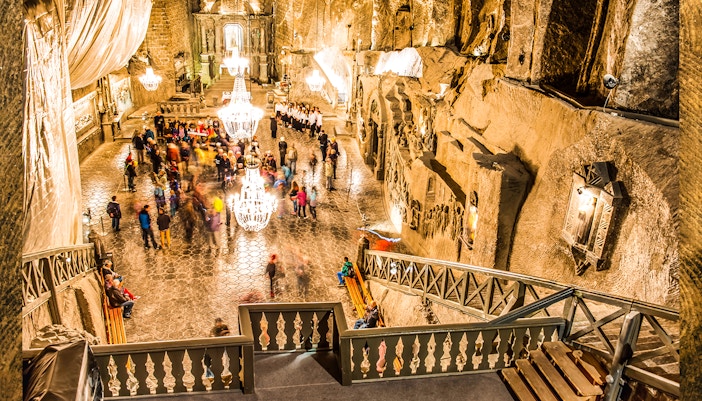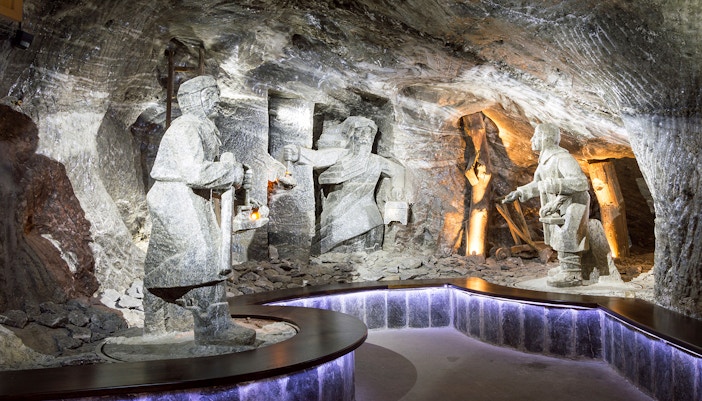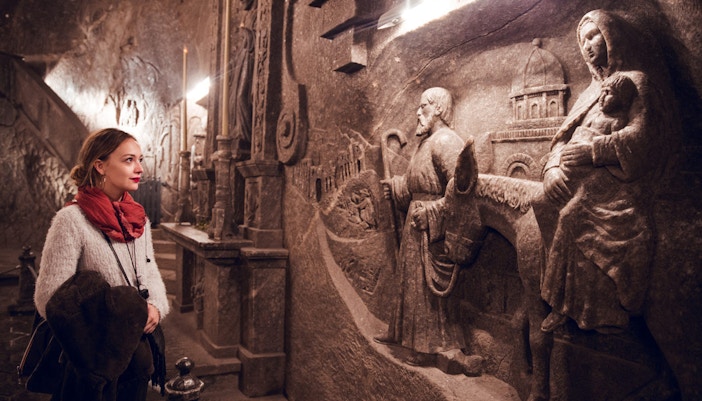Wieliczka Salt Mine History: A Comprehensive Overview
Wieliczka Salt Mine history explained
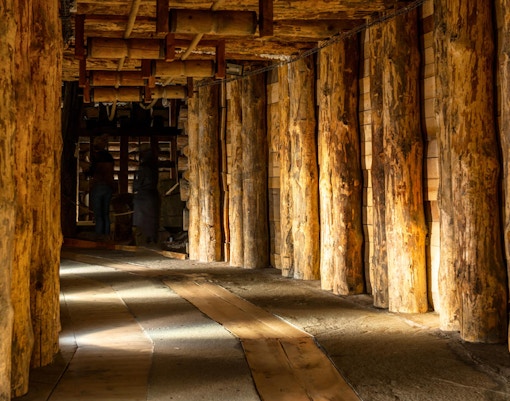
Salt's ancient origins
Time Frame: Neolithic times
In Neolithic times, brine was drawn from springs and boiled to produce salt, marking the birth of Wieliczka's salt-working tradition. Tools discovered near Barycz reveal the simplicity of early salt extraction. The resulting salt not only served as a preservative for meat and fish but also evolved into a form of currency in trade. The knowledge of producing evaporated salt was transmitted through successive generations.
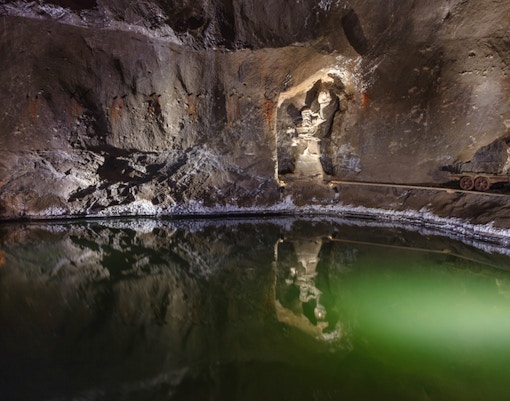
Rise of Wieliczka in the Middle Ages
Time Frame: 11th to 13th Century
Salt springs started to weaken, which led to the construction of wells. Saltwater was drawn from the well and boiled in iron pans until only the pure evaporated salt was left. The accidental discovery of rock salt in the 13th century led to salt mining – a turning point in Wieliczka's history. The initial shaft, delving into the ground, was discovered as early as the latter part of the 13th century.
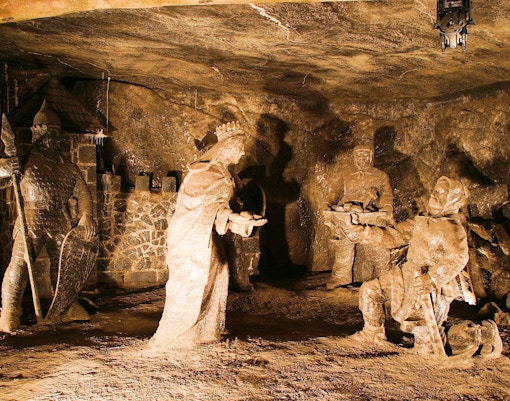
Casimir III's Legacy
Time Frame: 14th to 15th Century
Mining remained a seasonal activity, with the mine operating exclusively during months when no agricultural tasks were underway. Meanwhile, King Casimir III, the visionary monarch, utilized salt revenue to transform Poland. The Saltworks Statute, built in 1368, and the Krakow Academy, funded by salt profits, was a testament to his greatness. By the end of the 15th century, Wieliczka started attracting visitors, with Nicolaus Copernicus, a renowned astronomer, being the first.
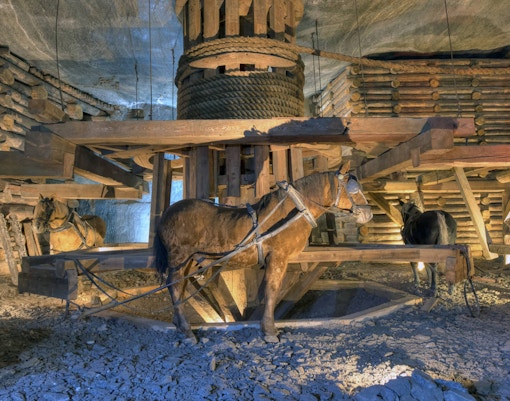
Salt mine's dynamic developments
Time Frame: 16th Century
Wieliczka shifted to year-round mining, employing specialists and introducing innovative technologies. Tourism flourished, with attractions like horse-drawn railways and underground boat rides. During the 16th century, exploration for subterranean salt extended beyond the first level, progressing to the third level by the mid-17th century. Faced with challenges, the process of salt evaporation was discontinued in 1724, and exclusive reliance on mining techniques ensued.
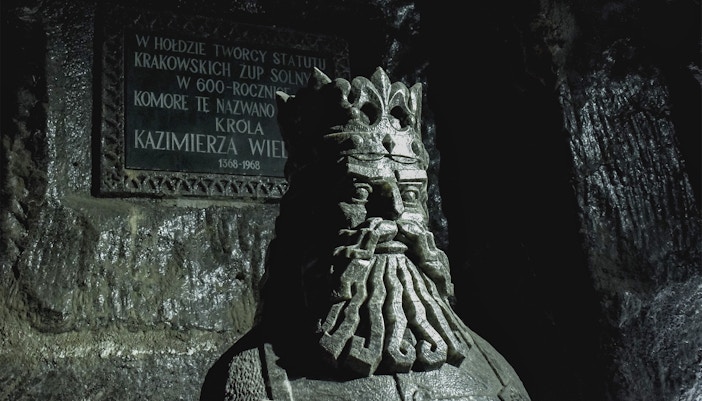
Post partitions
Time Frame: 17th Century
Wieliczka's long-term development was prioritized under Habsburg rule after the 1772 partitions. Industrial innovations, including salt extraction with gunpowder, underscored its importance. Tourism became pivotal, featuring horse-drawn railways and boat rides. In 1774, the practice of having visitors sign guest books was started. These records have been maintained over time and serve as a valuable historical asset.
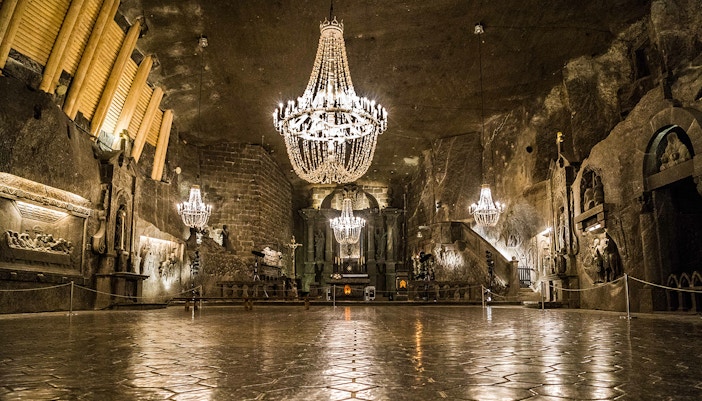
The interwar period
Time Frame: 1918-1939
Post-independence, Wieliczka regained Polish ownership, becoming a symbol of national pride. A symbolic renaming of the shafts and excavations was done, for instance, the designation of Empress Elisabeth’s Shaft was changed to St. Kinga’s Shaft. During the interwar period, the mine flourished at peak salt production and became a hub for events, hosting rallies, anniversaries, conventions, and distinguished guests.
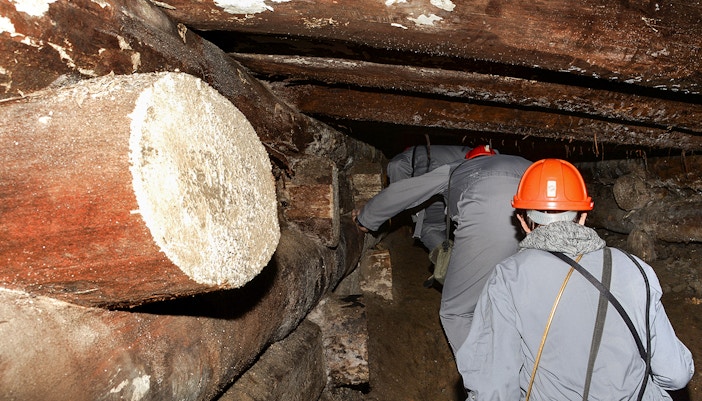
Post-World War II
Time Frame: 1945–1970s
Post-war saw increased salt production, with the mine growing to nine levels, with a depth of 327 meters, but workers’ safety was compromised. The mine, then, evolved, recognizing the importance of preserving its heritage for future generations. Finally, in 1964, rock salt mining ceased, emphasizing cultural importance.
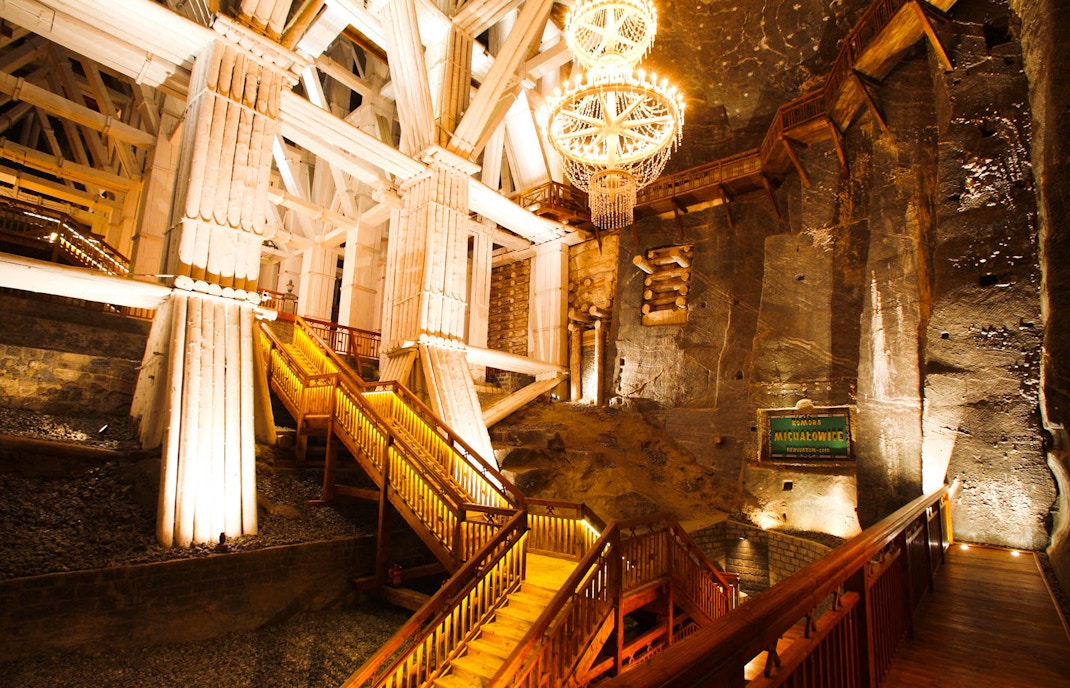
UNESCO recognition
Time Frame: 1978 & 1996
UNESCO recognition in 1978 and the national monument declaration in 1994 emphasized the mine's priceless cultural and natural heritage. In 1996, a decision was made to cease the production of industrial salt in Wieliczka, transforming the salt mine into a global tourist attraction.
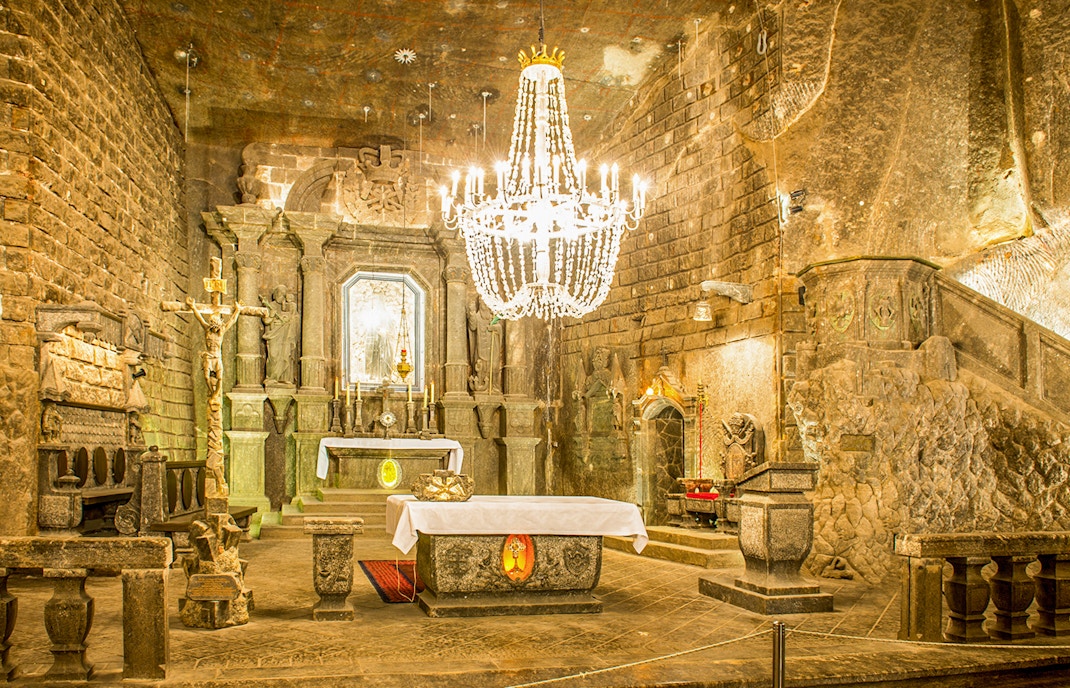
The mine in recent times
Time Frame: 1996-Present
Miners today continue the legacy, working tirelessly to maintain and renovate historic areas, ensuring Wieliczka remains a world-renowned tourist destination. Preserving history, renovating chambers, and creating new attractions, they safeguard this unique monument for future generations.
Wieliczka Salt Mine today
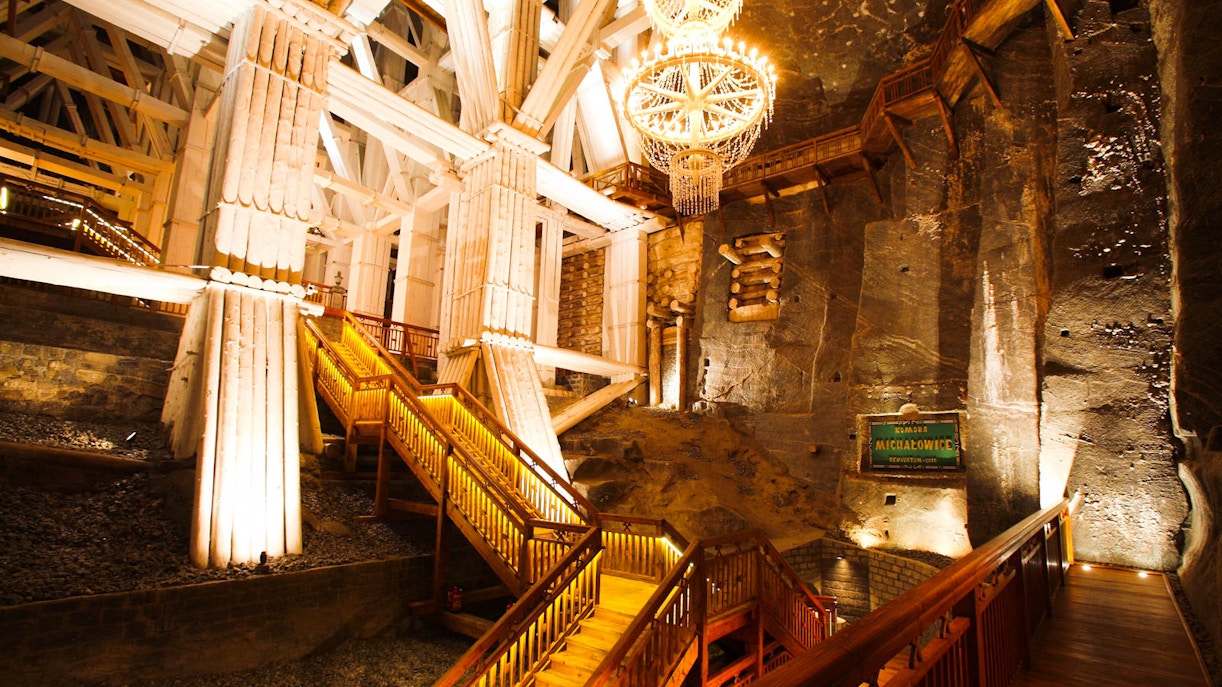
Once an industrial powerhouse, the Wieliczka Salt Mine has transformed into a captivating destination for global tourists. Hundreds of miners work tirelessly every day to ensure the mine remains a haven and a well-preserved historical treasure for generations to come. Historic chambers, corridors, and shafts are meticulously renovated, offering visitors a glimpse into the past.
The mine’s allure extends beyond its historical significance; it also hosts events and has a unique health resort in its depth. Today, nearly 2 million visitors from around the globe explore the salt marvels underground, affirming the mine’s status as one of the wonders of the world.
Visit Wieliczka Salt Mine
Book your Wieliczka Salt Mine tour
Frequently asked questions about Wieliczka Salt Mine history
The Wieliczka Salt Mine, dating back to the 13th century, is historically significant for its pivotal role in salt extraction, influencing trade routes and contributing to the economic growth of Krakow. Its unique underground architecture, notably the Chapel of St. Kinga, reflects centuries of miner craftsmanship and innovative engineering.
The Wieliczka Salt Mine is over 700 years old, with its origins traced back to the 13th century when salt extraction operations commenced.
The construction of the Wieliczka Salt Mine spanned centuries, evolving organically as miners carved intricate chambers and passages underground throughout its more than 700-year history.
The Wieliczka Salt Mine was not designed by a single architect; rather, its construction evolved through generations of miners who shaped its underground spaces.
Events such as the construction of the Chapel of St. Kinga in 1722, the introduction of the world's first underground brine graduation tower in 1784, and its recognition as a UNESCO World Heritage Site in 1978 have significantly shaped the salt mine's rich history.
Yes, Wieliczka Salt Mine guided tours are available, offering detailed explanations of the Wieliczka Salt Mine's history, architectural marvels, and significant events. Knowledgeable guides provide insights into the mine's rich past, ensuring a comprehensive and engaging visitor experience.
Visiting the Wieliczka Salt Mine is a journey through centuries of history, art, and industry. Its unique underground world, intricate carvings, and captivating stories make it a must-visit destination.

